Tinplate For General Can CHBA Made In China
- Loading Port:
- Tianjin
- Payment Terms:
- TT/LC
- Min Order Qty:
- 20 Tons~ 25 Tons m.t.
- Supply Capability:
- 40000 MT Per Month m.t./month
OKorder Service Pledge
OKorder Financial Service
You Might Also Like
General information of Tinplate for General Can
Steel Type | MR |
Temper (BA&CA) | T1~T5, DR8 |
Coating | 2.8~8.4g/m2 |
Thickness & Tolerance | 0.15~0.5mm (Tolerance:±0.01mm) |
Width & Tolerance | 600~1000 mm(Tolerance: +2/-0mm) |
I.D | 508 MM |
Coil Weight | 3~10 MT |
Passivation | 311 |
Oiling | DOS |
Surface Finish | Bright ,Stone ,Silver ,Matte |
Min Order | 25 Tons for 1 20 feet FCL |
Package | Seaworthy Export Standard Wooden Pallet |
Standard Available | GB/T2520-2000, JIS G3303, ASTM A623, BS EN10202 |
Lead Time | 35 days after receiving buyer's original L/C or Prepayment |
Special specifications are available on customers' requirements. | |
Technical data of Tinplate for General Can
Chemical Composition(%) | Mechanical Property |
C:0.02~0.04 | Yield Strength: (Mpa):280~320 |
Si:0.01~0.03 | TensileStrength: (Mpa):340~390 |
Mn:0.18~0.22 | Elongation:20%~30% |
P:0.014~0.016 | ------------- |
S:0.006~0.009 |
Tinplate is widely used for making all types of containers such as artistic cans, tea cans, painting cans,
chemical package cans and metal printing etc. Its applications are not limited to containers; recently,
tinplate has also been used for making electrical machinery parts and many other products.
Equipment and Facility of Tinplate
Tin Coating Line
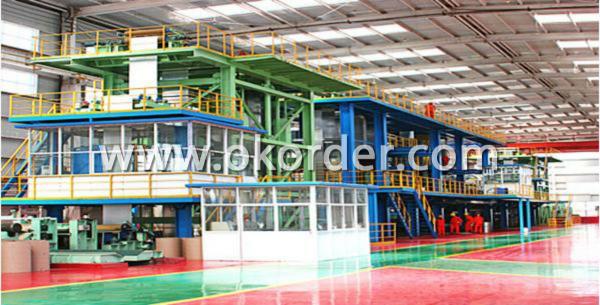
Cold Rolling Mill Batch Annealing Furnaces
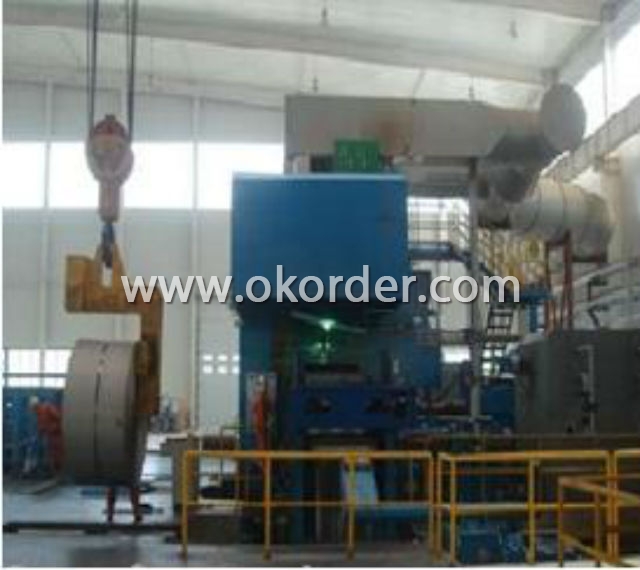
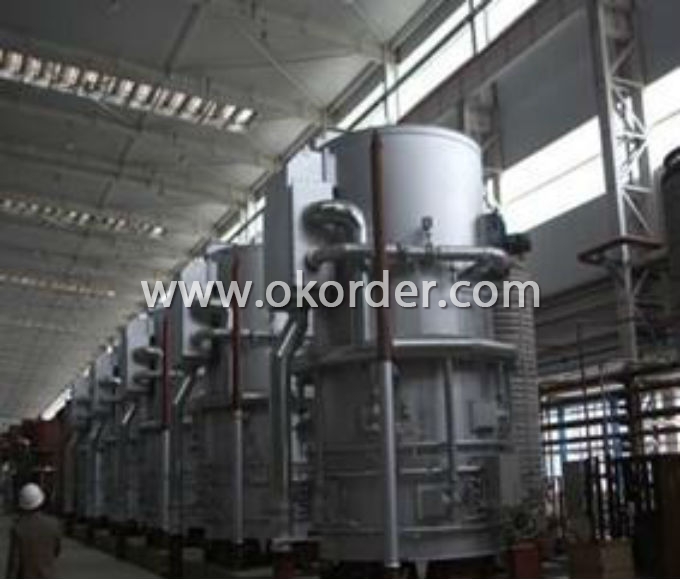
Cutting Line Stock Area
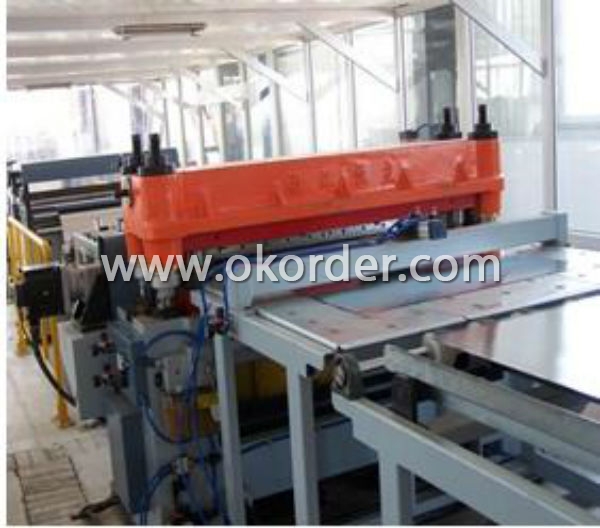
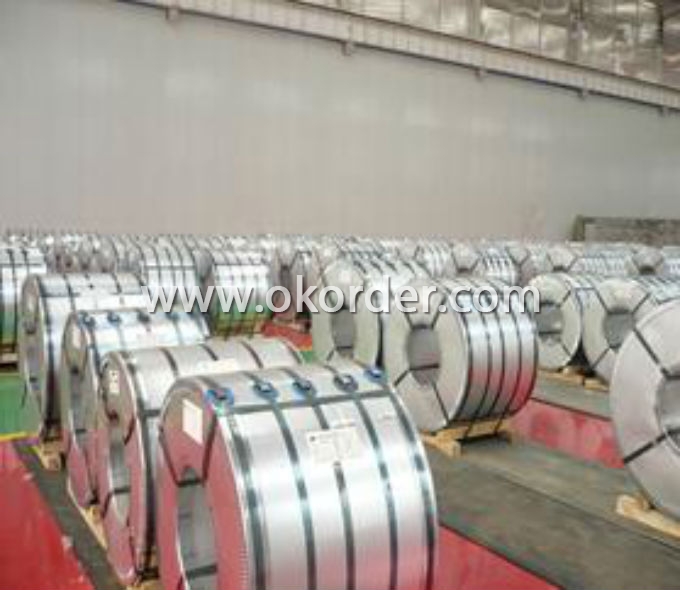
Quantity Control System of Tinplate
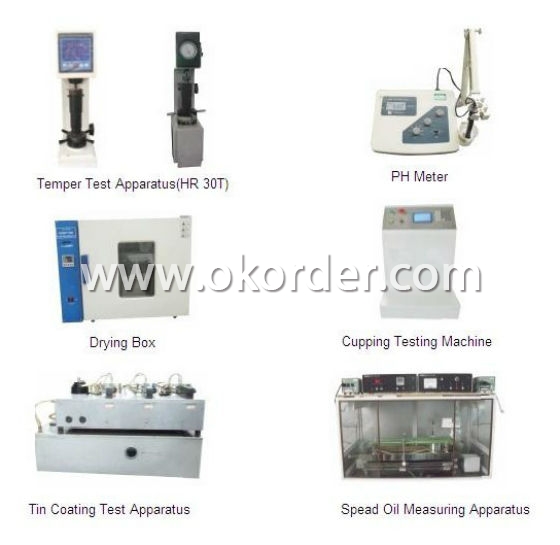
- Q:How does tinplate compare to aluminum packaging?
- Tinplate and aluminum packaging have their own unique advantages and characteristics. Tinplate offers excellent resistance to corrosion, making it ideal for preserving food and beverages. It is also known for its durability and ability to withstand high temperatures. On the other hand, aluminum packaging is lightweight, malleable, and provides a strong barrier against light, oxygen, and moisture. It is widely used in the beverage industry due to its recyclability and sustainability. Ultimately, the choice between tinplate and aluminum packaging depends on specific requirements such as product compatibility, cost, environmental impact, and desired aesthetics.
- Q:How is tinplate coated with organic coatings?
- Tinplate is coated with organic coatings through a process called electrolytic deposition. This involves immersing the tinplate in an electrolyte solution and passing an electric current through it. The organic coating materials, typically polymers or resins, are dissolved in the electrolyte solution and are attracted to the charged surface of the tinplate. As the electric current passes through, the organic coating materials are deposited onto the tinplate, forming a protective layer.
- Q:What are the benefits of using tinplate for electrical components?
- Using tinplate for electrical components offers several benefits. Firstly, tinplate is corrosion-resistant, which helps to protect the components from moisture and other environmental factors that could lead to damage or malfunction. Secondly, tinplate has excellent conductivity, ensuring efficient and effective electrical flow within the components. Additionally, tinplate is a lightweight and durable material, making it ideal for use in electrical applications. Furthermore, tinplate is easily recyclable, making it a sustainable choice for manufacturers. Overall, utilizing tinplate for electrical components enhances their performance, longevity, and environmental sustainability.
- Q:Can tinplate packaging be used for chemical products?
- Yes, tinplate packaging can be used for chemical products. It is a common choice for storing and transporting various chemicals due to its durability, resistance to corrosion, and ability to provide a protective barrier against external factors. Tinplate packaging is also compatible with different closure systems, making it suitable for a wide range of chemical products.
- Q:How is tinplate coated for furniture?
- Tinplate is coated for furniture by applying a thin layer of tin to a steel sheet through an electroplating process, forming a protective and decorative coating.
- Q:What are the advantages of using tinplate for furniture?
- One of the advantages of using tinplate for furniture is its durability. Tinplate is known for its resistance to corrosion, ensuring that furniture made from it will have a longer lifespan. Additionally, tinplate is lightweight yet sturdy, making it easy to move and rearrange furniture without compromising its structural integrity. Another advantage is its versatility in design. Tinplate can be easily molded into various shapes and forms, allowing for creative and unique furniture designs. Lastly, tinplate is also an eco-friendly option as it can be recycled, reducing waste and promoting sustainability in the furniture industry.
- Q:Can tinplate packaging be used for medical products?
- Yes, tinplate packaging can be used for medical products. Tinplate is a durable and corrosion-resistant material that provides protection to the contents. It is commonly used for packaging various medical products such as ointments, creams, and small medical devices. Additionally, tinplate packaging offers excellent barrier properties against moisture, light, and oxygen, ensuring the integrity and longevity of the medical products.
- Q:What are the main differences between tinplate and tin-free steel?
- The main differences between tinplate and tin-free steel lie in their composition and properties. Tinplate is a thin steel sheet coated with a layer of tin, which provides excellent corrosion resistance and protects the steel from rusting. Tin-free steel, on the other hand, is a steel sheet that does not have a tin coating but is instead coated with a layer of other metals like chromium or chromium oxide. While tinplate offers superior protection against corrosion, tin-free steel is known for its enhanced strength and durability. Additionally, tinplate is often used for food and beverage packaging due to its non-reactive nature, while tin-free steel finds applications in automotive parts, cans, and other industrial uses.
- Q:How is tinplate stored and transported?
- Tinplate is typically stored and transported in rolls or sheets. It is commonly packaged in coils and secured with strapping or wrapping to prevent damage during transportation. These coils or sheets are then loaded onto trucks, ships, or trains for distribution to manufacturers and consumers. Additionally, proper handling and storage conditions are crucial to maintain the quality of tinplate, such as protecting it from moisture, extreme temperatures, and physical impact.
- Q:How does tinplate compare to tin-free steel in terms of properties and applications?
- Tinplate and tin-free steel have distinct properties and applications. Tinplate, which is steel coated with a thin layer of tin, offers excellent corrosion resistance, formability, and solderability. It is commonly used in the food and beverage industry for making cans, containers, and closures due to its ability to preserve the product's quality and prevent contamination. On the other hand, tin-free steel, also known as electrolytic chromium-coated steel, provides superior paint adhesion, scratch resistance, and weldability. It finds applications in manufacturing various products like aerosol cans, automotive parts, and appliances that require durability and aesthetic appeal. Ultimately, the choice between tinplate and tin-free steel depends on the specific requirements of the application at hand.
1. Manufacturer Overview |
|
|---|---|
| Location | Hebei,China |
| Year Established | 2009 |
| Annual Output Value | Above US$100 Million |
| Main Markets | North America;South America; Eastern Europe Southeast Asia; Africa; Mid East Eastern Asia; Western Europe; Central America Northern Europe; Southern Europe; Domestic Market |
| Company Certifications | HACCP;ISO 9001:2008;ISO 14001:2004 |
2. Manufacturer Certificates |
|
|---|---|
| a) Certification Name | |
| Range | |
| Reference | |
| Validity Period | |
3. Manufacturer Capability |
|
|---|---|
| a)Trade Capacity | |
| Nearest Port | Tianjin |
| Export Percentage | 11% - 20% |
| No.of Employees in Trade Department | 6-10 People |
| Language Spoken: | English;Chinese |
| b)Factory Information | |
| Factory Size: | Above 270,000 square meters |
| No. of Production Lines | Above 12 |
| Contract Manufacturing | OEM Service Offered |
| Product Price Range | High;Average |
Send your message to us
Tinplate For General Can CHBA Made In China
- Loading Port:
- Tianjin
- Payment Terms:
- TT/LC
- Min Order Qty:
- 20 Tons~ 25 Tons m.t.
- Supply Capability:
- 40000 MT Per Month m.t./month
OKorder Service Pledge
OKorder Financial Service
Similar products
New products
Hot products
Hot Searches
Related keywords






























